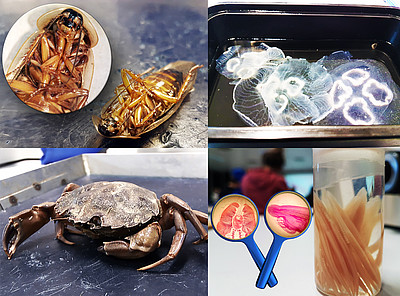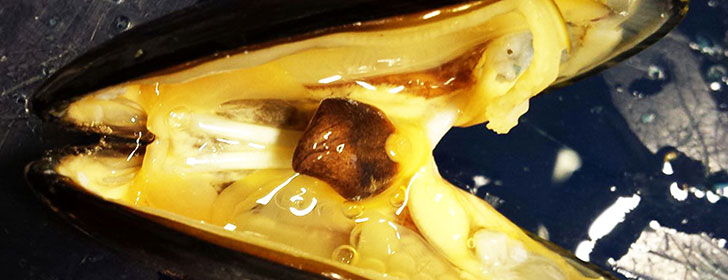
The contributions include the personal and individual opinions of students and supervisors. They do not necessarily reflect the opinion of the University of Hohenheim.
With tweezers, scissors, and scalpels: Discussion on dissection course Zoology

Dissecting at the university, commenting for science and animal experiments: These are the topics of the discussion on the last day of the dissection course “Structure and Function of Animals.” At the invitation of the Online Courier, students gave their opinions on the dissection course.
For students in the first semester of Biology at the University of Hohenheim, it is compulsory: the dissection course “Structure and Function of Animals” in the zoology module. In 12 sessions, the first semester students get hands-on experience in addition to theory: From paramecia to frogs or mice.
After the last dissection day, several students from both courses sat down with the student assistants and course instructor Philipp Vick and discussed: what do they think of the course, how important are the contents, and how did they feel.
A blog as a way to give the students a voice
The occasion is a blog project that the Online Courier wants to start in the upcoming winter semester. Each week, participants from the course are to report on what they experienced and how they felt.
In the past semester, the editors already ran a test phase and asked students to write short texts. Even this test run offers the opportunity for discussion.
Practical work stays with you the longest
One student - and many of the of the online commentators - think that there are simply too many animals killed. They ask for fewer animals, maybe even just one animal per course that is then dissected by the course instructor, projecting it on a screen.
Or before the start of the semester the number of participants who even want to dissect the animals could be asked to determine the required number of animals.
But this suggestion met with opposition: Most of those present would not want to forgo the practical experiences offered in the dissection course.
“The content of the dissection course is what I was able to remember best out of all of the courses this semester,” said one of the students. And this was not despite but because of the practical part.
Curiosity instead of uncertainty
Another also emphasized that he would find it bad and even unfair if everyone was first asked whether or not they wanted to dissect. “In the end everyone would still get a certificate saying that they can dissect animals. Even those who never once touched the scissors.”
Another student admitted that she was very uncertain at the start of the course. “I didn’t think I would ever be able to dissect an animal, especially not frogs, chicks, or mice. At the beginning I just let my partner dissect everything.”
But over time she grew curious. “You’re slowly introduced to dissection. The interest in seeing how similar or different the inside of different species or classes is becomes greater.”
Communication about animal experiments can help science
For the instructors, the dissection course is absolutely necessary. But they are willing to discuss with students, to respond to arguments, and to clear up some things.
One of the student assistants emphasized, for example, that she takes absolutely no enjoyment from killing the animals. But she also said: “The animals that are dissected are at least still used for a good purpose: Conveying knowledge. They all would have been killed anyway, even without the dissection course.” (see box)
In general, a blog like the one initiated by HOnK represents a good opportunity. “In a lot of scientific areas, animal experiments can’t be avoided. For scientists in their labs that is clear. They work on this topic daily.”
But they can also understand that it can be off-putting for new or prospective students who are still undecided. “A blog can help tell the public what we are doing here, thereby helping science for the future.”
“The Experiment Dissection Blog”
That’s not only the perspective of the student assistants. The students also stated that they often wanted more open discussions, including ones on difficult topics.
Still: “The idea with the texts is really good so far, but it’s a little one-sided,” summarized one student. “I have contact with a lot of students from the course, and the in part very negative comments don’t reflect the atmosphere as I experienced it.”
In the end, everyone agreed especially on one point: It is important to communicate about animal experiments in science.
Text: Corinna Schmid








